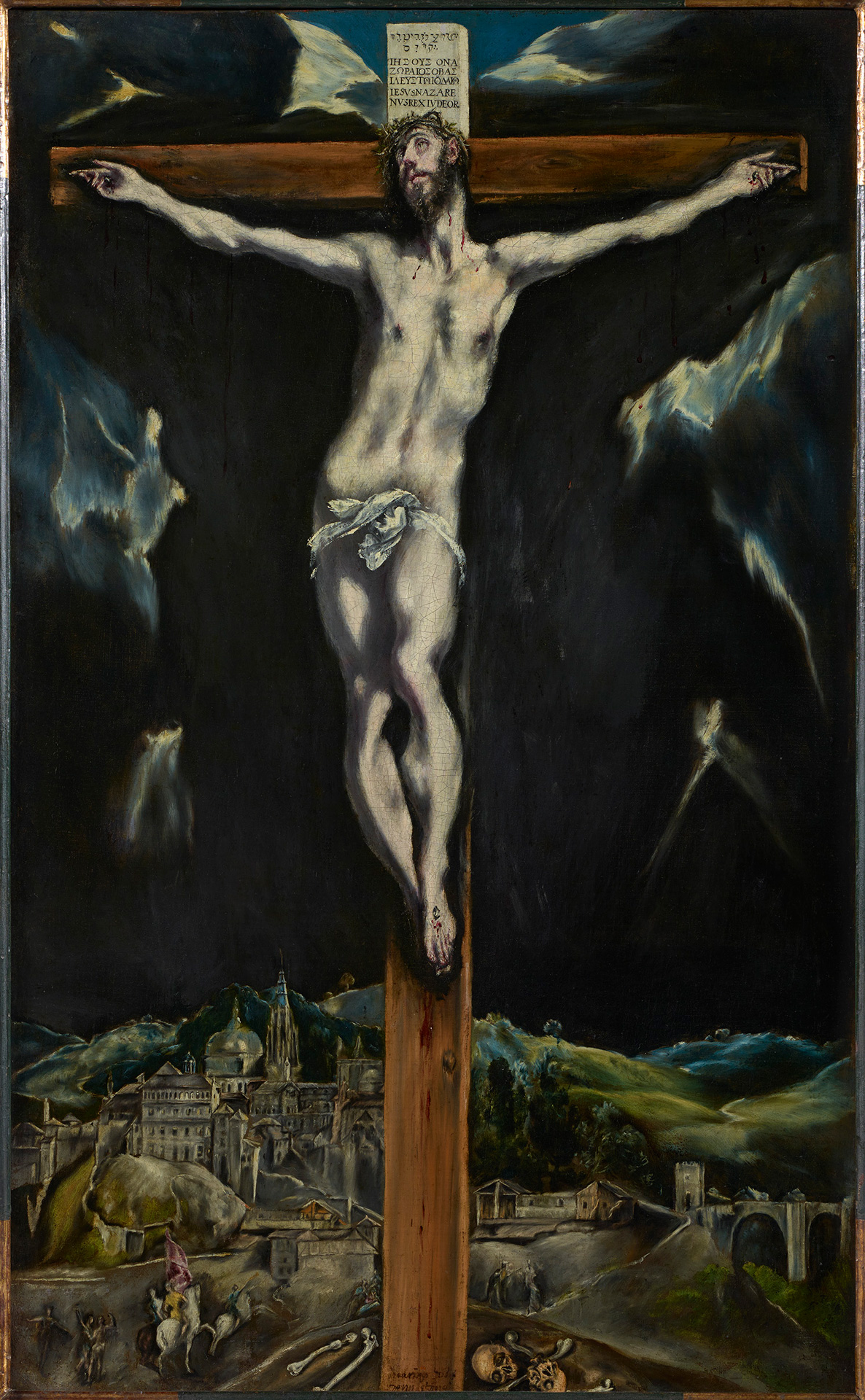
El Greco (Domenicos Theotocopoulos) (Candia, Crete, Greece, 1541 – Toledo, 1614)
Christ Crucified with Toledo in the Background
1604-1614
WORK INFORMATION
Oil on canvas, 111 x 69 cm
OTHER INFORMATION
Signed at the bottom of the cross: "domenikos theotokopoulus e´poiese"
Domenikos Theotokopoulos, better known as El Greco, was born on Crete in 1541 and trained there as a painter of Byzantine-style icons. At the age of 21 he went to Venice, where he studied and learned the technique of the great Venetian painters: Titian, Tintoretto, Veronese and the Bassanos. He travelled through Italy, discovering the works of the great Renaissance masters and expanding his store of knowledge, and eventually settled in Rome, where he picked up the monumentality and formalism of classical culture. Above all, he was impressed by the draughtsmanship and grand forms of Michelangelo.
El Greco combined Venetian colouring and Roman formalism to come up with his own style. Thus equipped, he set out for Spain in 1576. He began producing masterpieces as soon as he arrived, although we have yet to determine exactly where he established his trade and mastered technique, drawing and composition with dazzling colours. In Toledo he opened a workshop with assistants to reproduce the prototypes of his own paintings and satisfy his devout clientele's demand for artworks consistent with the ideology of the Catholic Counter-Reformation. In this city, cut off from the new artistic trends then developing in Italy, El Greco's art evolved in a different direction, leading him to devise a style so unique and unrivalled in the history of painting that it would only be understood centuries later by the artists of the 19th and 20th-century avant-garde movements, who saw him as their predecessor.
The image of Christ Crucified in the Banco Santander Collection may be the prototype of the versions in which the Toledo landscape forms the background of the composition. Although Christ's figure is mostly the work of assistants, the execution is delicate, the colours are clean and the brushwork is precise and nuanced, especially on the head. Christ is nailed to the cross but his expression seems ecstatic rather than pained. The body is weightless, rising like a delicate flame, and even the nails seem incapable of holding him to the cross. As rain falls from the heavens, drops of redeeming blood trickle down from Christ's arms to wash away the sin of Adam and Eve, whose skulls and bones are scattered on the ground at the foot of the cross. The landscape behind this crucifixion is a fanciful interpretation of the Toledo landscape, bathed in the ghostly glow of lightning bolts. Buildings and elements from the real landscape were rearranged to compose an imaginary vision of Jerusalem.
There are several known versions of this composition by El Greco, with Christ on the cross and Toledo in the background, but they were all made by his assistants. The fact that a painting is signed by Domenikos, as is the case here, does not necessarily mean he painted it himself; it merely indicates that the piece came from his workshop and that the master had approved the material execution of his idea and defended his intellectual property.
The Annunciation in the Banco Santander Collection is one of El Greco's final works. It was intended for the right side altar of the church in Tavera Hospital, but the painter died before he could finish it. The picture was divided into two parts in the late 19th century. The central scene, showing the Virgin and angel, belongs to Banco Santander, while the upper register with an "angelic choir" scene is held at the National Gallery in Athens.
When the painting was lined in the 20th century, a major alteration was made that changed the original composition. The angel's legs were cut down and moved to make the figure stand on the floor, which destroyed the dynamic effect El Greco had originally devised.
The upper part of this fragment ends with a heavenly scene of divine light bursting through the clouds and an allegorical representation of the Virtues. This area of the composition is magnificently executed with a confident technique, loose brushwork and vibrant colouring. [Rafael Alonso Alonso]

